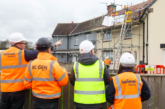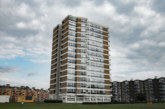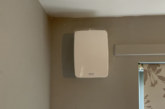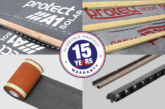 In the fourth part of our series on domestic ventilation, John Kelly, Marketing Manager at Airflow Developments discusses technical innovations in the industry and the solutions available to meet different requirements.
In the fourth part of our series on domestic ventilation, John Kelly, Marketing Manager at Airflow Developments discusses technical innovations in the industry and the solutions available to meet different requirements.
Poor indoor air quality is a serious issue for social housing providers with studies identifying over 900 pollutants within British homes, including high levels of volatile organic compounds (VOCs), polycyclic aromatic hydrocarbons (PAHs) and microbial pathogens. Excess moisture from everyday activities such as cooking and bathing can cause damp, mould and condensation to form. Understanding the issues for both occupant health and the building fabric, leading manufacturers have developed a wide range of products that are both energy-efficient and deliver effective ventilation.
Intermittent extraction
Individual fan units can be installed where needed within the property, such as bathrooms and kitchens and operate on an ‘as required’ basis. In addition to standard options, activated manually by a switch or pull cord, products with integrated timers, humidity sensors or motion detectors allow the units to operate automatically. This can improve efficiency and ensure ease of use for residents. These are ideal for those looking for a simple, flexible ventilation solution that is quiet, energy-efficient and economical to run.
Continuous extraction
An alternative solution is continual ventilation, with central extract and de-centralised Mechanical Extract Ventilation (dMEV) the two main options. In a centralised system, an extract unit is typically installed in a loft space or cupboard with ducting routed around the home to each wet room, for example kitchens, bathrooms and utility rooms.
The localised dMEV solutions are single room fans fitted in wet rooms to provide constant ventilation. In line with the recommendations of Approved Document F, these fan systems are typically designed to operate at a trickle rate of 8 L/sec in bathrooms and 13 L/sec in kitchens with an on-demand boost speed available. High quality dMEV products are unobtrusive, economical to operate and feature the latest motor technology to reduce human intervention whilst ensuring the fan is always operating at its optimum level. Some systems cost as little as £1 a year to run when used on the lowest speed and achieve noise levels as low as 10 dB(A).
Technical innovations within the industry have provided specifiers with discreet, energy-efficient options to improve indoor air quality and protect both the health of tenants and the fabric of the building.
For further information on Airflow visit: www.airflow.com or follow on Twitter @airflowD










